Marketing campaign is a coordinated series of actions and tactics designed to achieve a specific marketing goal or objective within a specific time frame. It involves creating and executing a plan that utilizes different marketing channels to promote a product, service, or brand.
Marketing campaigns are essential for businesses to attract and retain customers, increase sales, and build brand awareness. A well-executed marketing campaign can help a business stand out in a crowded marketplace, establish credibility, and build lasting relationships with customers.
Running a successful marketing campaign involves several key steps, including defining objectives and identifying the target audience, developing a marketing strategy, executing the campaign, analyzing results, and refining the strategy. In this blog post, we will provide a detailed guide on how to run a successful marketing campaign.
Table of Contents
I. Determine Your Objectives and Target Audience

Define your marketing campaign objectives
Before launching a marketing campaign, it’s important to clearly define your objectives. What do you want to achieve with this campaign? Do you want to increase sales, generate leads, build brand awareness, or promote a new product or service? Your objectives should be specific, measurable, attainable, relevant, and time-bound (SMART).This means your objectives should be:
- Specific: clearly defined and focused
- Measurable: quantifiable, so you can track progress and success
- Achievable: realistic and attainable with the resources available
- Relevant: aligned with your overall business goals and strategy
- Time-bound: set within a specific timeframe to create a sense of urgency.
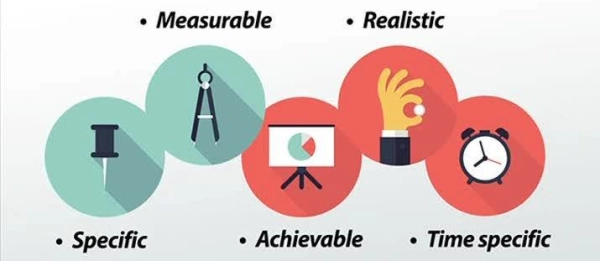
Some common marketing campaign objectives might include:
- Increasing brand awareness
- Generating leads or sales
- Building customer loyalty or engagement
- Launching a new product or service
- Growing market share or penetration
- Improving customer satisfaction or retention
Identify Your Target Audience

The success of your marketing campaign will depend heavily on your ability to connect with your target audience. To do this, you need to understand who they are, what they care about, and where they’re likely to be found. Here are some tips for identifying your target audience:
Create buyer personas: Use market research and data to create detailed profiles of your ideal customers. This should include demographic information, such as age, gender, income, and location, as well as psychographic information, such as interests, values, and behaviors.
Segment your audience: Divide your target audience into different groups based on shared characteristics or needs. This will allow you to tailor your messaging and tactics to each segment.
Analyze your competition: Look at your competitors to see who they’re targeting and how they’re reaching them. This can give you insight into gaps in the market or opportunities to differentiate yourself.
Conduct Market Research and Gather Data
To create effective marketing campaigns, you need to have a deep understanding of your target audience, industry trends, and competitive landscape. Here are some methods for conducting market research:
- Surveys and questionnaires: Use online surveys or questionnaires to gather feedback and opinions from your target audience.
- Focus groups: Bring together a small group of people who fit your target audience to discuss your product or service and provide feedback.
- Online research: Use online tools, such as social media listening or keyword research, to gather data about your audience or industry.
- Data analysis: Analyze data from your website, social media, or other channels to identify trends or patterns in customer behavior

By gathering and analyzing data, you can gain insight into what motivates your target audience, which tactics are most effective, and what opportunities exist to differentiate yourself from the competition. This information can then inform the development of your marketing strategy.
II. Develop Your Marketing Strategy

Once you’ve defined your objectives and identified your target audience, it’s time to develop your marketing strategy. This will involve determining which marketing channels to use, how much to spend, and what messaging to use. Here are the steps to follow:
Choose the Appropriate Marketing Channels
The marketing channels you choose will depend on your target audience, objectives, and budget. Here are some common marketing channels to consider:
- Social media: Platforms like Facebook, Instagram, and Twitter can be a great way to connect with your audience and promote your message.
- Email marketing: Use email to communicate with your customers, build relationships, and drive traffic to your website.
- Search engine optimization (SEO): Optimize your website to rank higher in search engine results and attract more organic traffic.
- Paid advertising: Use platforms like Google Ads, Facebook Ads, or LinkedIn Ads to target specific audiences and drive traffic to your website.
- Content marketing: Create blog posts, videos, infographics, or other types of content to attract and engage your audience.
When choosing your marketing channels, consider which channels are most likely to reach your target audience and achieve your objectives. It’s also important to track and measure the results of each channel to determine which ones are the most effective.
Dermine Your Budget

Your marketing budget will depend on a number of factors, including the size of your business, your marketing objectives, and the marketing channels you choose. It’s important to set a realistic budget that will allow you to achieve your objectives without overspending. Here are some things to consider when setting your budget:
Research industry benchmarks: Look at what other businesses in your industry are spending on marketing to get an idea of what’s reasonable.
Consider your objectives: Determine how much you’ll need to spend to achieve your marketing objectives.
Plan for contingencies: Leave some wiggle room in your budget to account for unexpected costs or opportunities.
Develop Your Messaging

Your messaging is the way you communicate with your audience and convey your brand’s value proposition. It’s important to develop messaging that’s tailored to your target audience and aligns with your overall brand strategy. Here are some tips for developing effective messaging:
Highlight your unique value proposition: Identify what sets your brand apart from the competition and make sure this is reflected in your messaging.
Use clear, concise language: Avoid jargon or technical terms that may confuse your audience.
Focus on benefits, not features: Rather than focusing on the features of your product or service, focus on the benefits it provides to your customers.
Use storytelling: Use storytelling to create an emotional connection with your audience and make your brand more relatable.
Create a Timeline
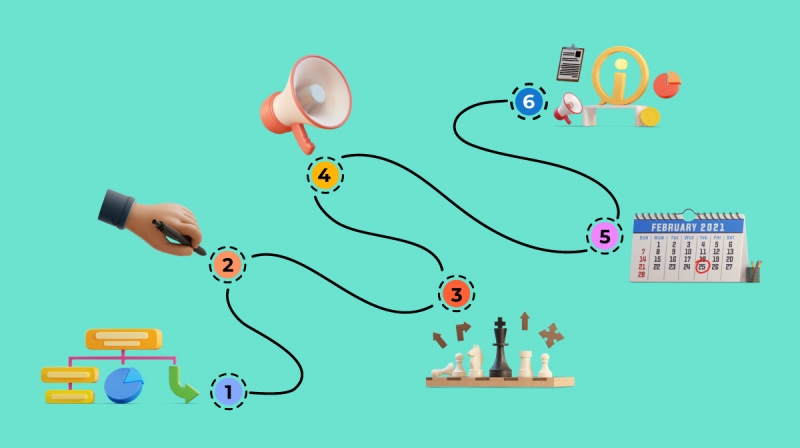
Creating a timeline for your marketing campaign will help you stay on track and ensure that everything is executed on time. Your timeline should include all the major milestones and deadlines for your campaign, as well as the tasks and responsibilities associated with each one. Here are some tips for creating an effective timeline:
Be realistic: Make sure your timeline is achievable given your resources and budget.
Break down tasks: Break down each major milestone into smaller, more manageable tasks.
Assign responsibilities: Assign specific responsibilities to team members or vendors for each task.
Set deadlines: Set clear deadlines for each task to ensure that everything is completed on time.
Track progress: Use a project management tool or spreadsheet to track progress and ensure that everything is on schedule.
By developing a clear marketing strategy and timeline, you’ll be well positioned to execute a successful marketing campaign that achieves your objectives and reaches your target audience.
III. Execute Your Campaign

Now that you’ve developed your marketing strategy, it’s time to execute your campaign. This involves creating the creative elements of your campaign, launching it, monitoring its performance, and adjusting it as needed. Here are the steps to follow:
Develop the Creative Elements
The creative elements of your campaign are the visuals, messaging, and content that you’ll use to promote your message. This includes things like ad copy, images, videos, landing pages, and email content. When developing your creative elements, it’s important to keep your target audience and marketing objectives in mind. Here are some tips for creating effective creative elements:
Use visuals that grab attention: Use eye-catching images or videos that will capture the attention of your target audience.
Be clear and concise: Use simple, straightforward messaging that clearly communicates your brand’s value proposition.
Create a sense of urgency: Use language that creates a sense of urgency to encourage your audience to take action.
Use a strong call-to-action: Include a clear call-to-action that tells your audience what to do next.

Launch Your Campaign
Once you’ve developed your creative elements, it’s time to launch your campaign. This involves setting up your marketing channels, launching your ads or email campaigns, and directing traffic to your landing pages or website. Here are some tips for launching your campaign:
Test everything: Test your ad copy, visuals, landing pages, and email content to ensure they’re effective.
Launch in stages: Consider launching your campaign in stages to test the effectiveness of different elements before committing your entire budget.
Use tracking codes: Use tracking codes to track the effectiveness of each marketing channel and ad campaign.
Monitor your budget: Monitor your spending to ensure you’re staying within your budget.
Monitor and Track the Performance of Your Campaign
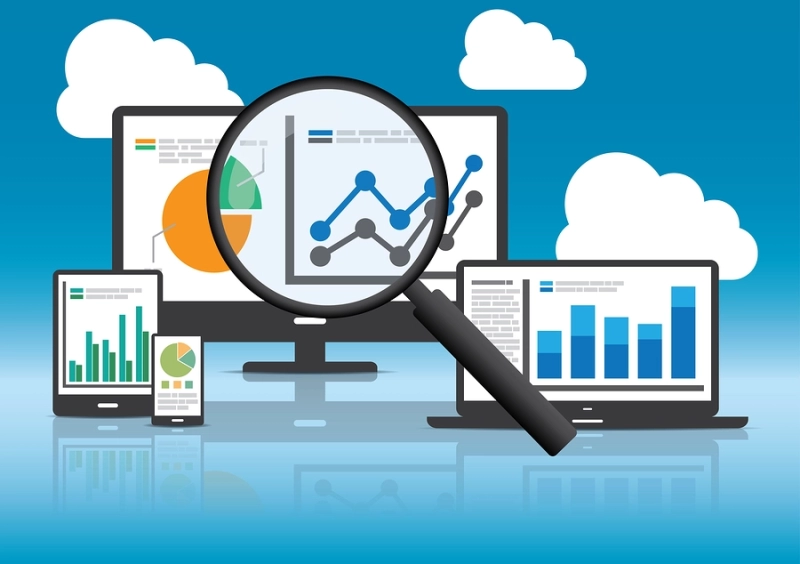
Once your campaign is launched, it’s important to monitor and track its performance to determine its effectiveness. This involves tracking metrics like click-through rates, conversion rates, and engagement rates. Here are some tips for monitoring and tracking the performance of your campaign:
Use analytics tools: Use tools like Google Analytics, Facebook Insights, or email marketing analytics to track your metrics.
Regularly review your metrics: Review your metrics regularly to identify trends and areas for improvement.
Identify what’s working and what’s not: Determine which marketing channels and campaigns are driving the best results and which ones need improvement.
Use A/B testing: Use A/B testing to test different variations of your marketing campaigns to determine which ones are most effective.
Adjust Your Campaign as Needed
Based on the performance of your campaign, you may need to make adjustments to improve its effectiveness. This may involve tweaking your messaging, adjusting your targeting, or reallocating your budget. Here are some tips for adjusting your campaign as needed:
Use data to inform your decisions: Use your campaign data to inform your decisions about what adjustments to make.
Be willing to pivot: Don’t be afraid to pivot your campaign strategy if it’s not achieving the desired results.
Continuously improve: Continuously improve your campaign by making data-driven adjustments and testing new strategies.
By executing your campaign effectively and monitoring its performance, you’ll be able to identify what’s working and what’s not and make adjustments as needed to achieve your marketing objectives.
IV. Analyze Results and Refine Strategy
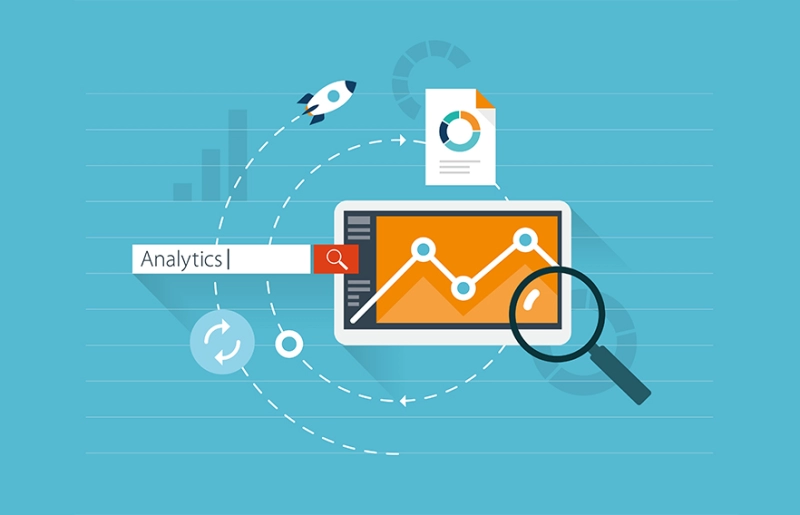
Analyzing the results of your campaign is essential for refining your marketing strategy and achieving better results in future campaigns. Here are the steps to follow:
Analyze the Results of Your Campaign
Start by analyzing the results of your campaign. This involves looking at metrics like click-through rates, conversion rates, and engagement rates. Use analytics tools to get a detailed picture of how your campaign performed. Here are some tips for analyzing the results of your campaign:
Compare results to your marketing objectives: Compare the results of your campaign to the marketing objectives you set at the beginning of the campaign.
Look for trends: Identify any trends in your data that may indicate areas for improvement.
Identify what worked and what didn’t: Determine which marketing channels and campaigns were most effective and which ones need improvement.
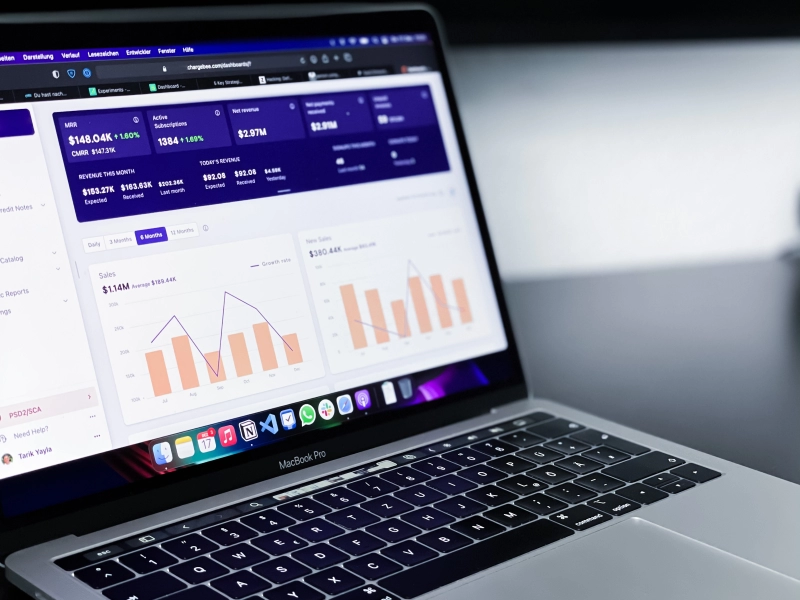
Identify Areas for Improvement
Based on your analysis, identify areas where you can improve your campaign. This may involve tweaking your messaging, adjusting your targeting, or reallocating your budget. Here are some tips for identifying areas for improvement:
Look for patterns: Identify any patterns in your data that may suggest areas for improvement.
Ask for feedback: Ask your audience for feedback on your campaign to gain insights into what worked and what didn’t.
Identify missed opportunities: Look for missed opportunities in your campaign that you could capitalize on in future campaigns.
Refine Your Strategy Based on Your Analysis

Use the insights you gained from analyzing your campaign results to refine your marketing strategy. This may involve making changes to your messaging, targeting, or marketing channels. Here are some tips for refining your strategy:
Make data-driven decisions: Use your data to inform your decisions about what changes to make.
Test your changes: Test your changes to determine their effectiveness before committing your entire budget.
Continuously improve: Continuously improve your strategy by making data-driven adjustments and testing new strategies.
Apply Your Learnings to Future Campaigns
Finally, apply the learnings from your analysis to future campaigns. Use what you learned to improve your targeting, messaging, and marketing channels to achieve better results. To apply your learnings to future campaigns, follow these tips:
Use data to inform future decisions: Use the data you collected to inform your decisions about future campaigns.
Continuously test and iterate: Continuously test and iterate your marketing strategy to improve your results over time.
Stay up-to-date with trends: Stay up-to-date with industry trends and changes in your audience to ensure your marketing strategy remains effective.

By analyzing your campaign results and refining your strategy based on your learnings, you can achieve better results in future campaigns and continuously improve your marketing efforts.
Conclusion
Running a successful marketing campaign is essential for achieving your business goals and reaching your target audience. A successful marketing campaign follows these steps:
- Determine your objectives and target audience
- Develop your marketing strategy
- Execute your campaign
- Analyze results and refine your strategy
- Apply your learnings to future campaigns
One of the most crucial steps in running a successful marketing campaign is analyzing the results and refining your strategy based on your learnings. Data analysis is essential for identifying areas for improvement and making data-driven decisions.It’s also crucial to continuously test and refine your marketing strategies to ensure you’re achieving the best possible results.
By staying up-to-date with industry trends and changes in your audience, you can ensure your marketing efforts remain effective and relevant.In conclusion, running a successful marketing campaign requires careful planning, execution, and analysis. By following these steps and continuously refining your strategy, you can achieve better results and reach your business goals.










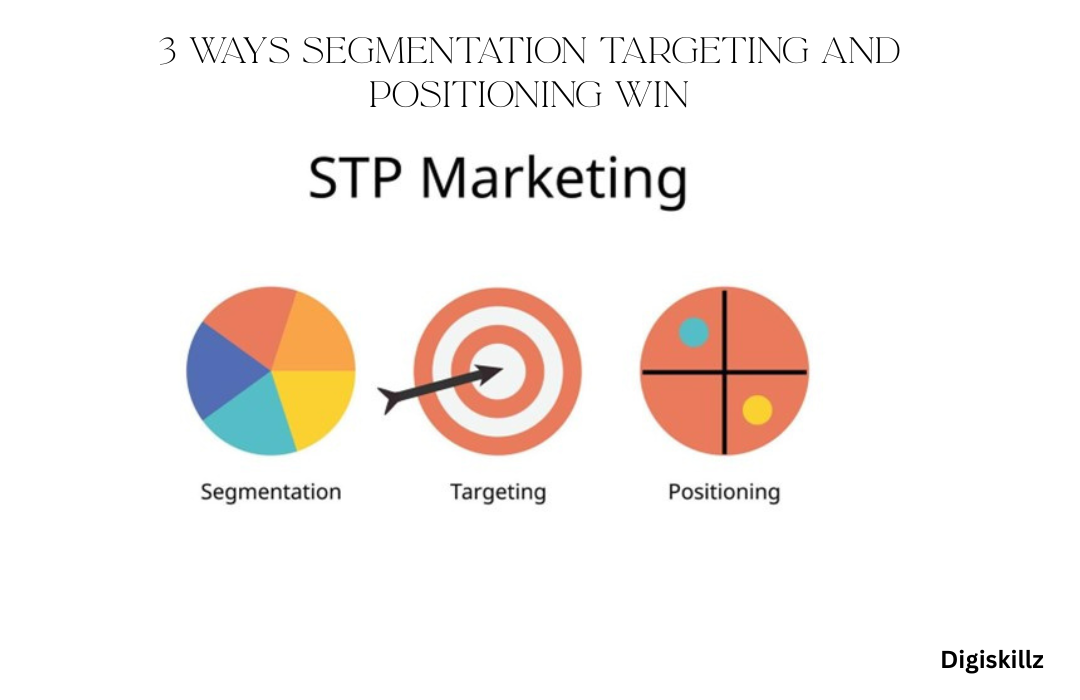
Leave A Comment